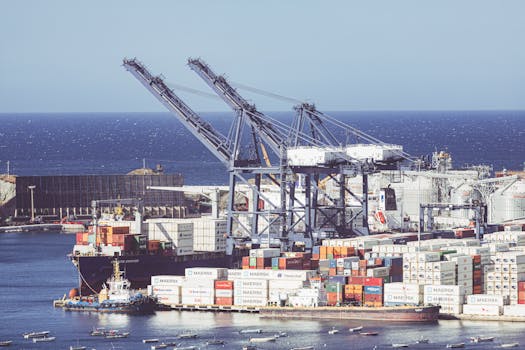Companies with the best and the worst technicals.
Lists of companies in NSE500 with the best and the worst technicals...
Lists of companies in NSE500 with the best and the worst technicals...
Lists of companies in NSE500 with the best and the worst fundamentals...
List of the latest important filings for NSE500....

Torrent Pharmaceuticals Limited's recent acquisition of JB Chemicals for ₹11,900 crore marks...

An analysis of the strategic considerations for the Indian government as it...

The article examines the strategic partnership between Vodafone Idea and AST Spacemobile,...

As we reach the midpoint of 2025, a growing sense of pessimism is sweeping through the executive suites of America’s corporations. Recent surveys conducted by the Conference Board revealed that CEO confidence hit its lowest levels since the immediate aftermath of the COVID-19 pandemic, plunging to a mere 35% of executives feeling optimistic about the prospect of the economy, down from 50% six months ago. This dramatic shift raises critical questions about the implications for employment, investment, and the overall business landscape.
This prevailing sentiment among CEOs stems from multiple economic headwinds. High inflation rates, which stabilized after the previous spikes, have begun to tick upwards once more due to supply chain disruptions. Current figures indicate that the Consumer Price Index (CPI) has risen by 4.5% year-on-year as of May 2025. This increase can be attributed to geopolitical tensions and ongoing energy market fluctuations, particularly in oil and gas, where prices have surged by an alarming 20% over recent months due to conflicts in Eastern Europe and Middle Eastern instability.
Moreover, the labor market's dynamics are shifting, intensifying the feeling of uncertainty. The latest data from the U.S. Bureau of Labor Statistics shows that unemployment remains low at 3.8%, but the number of job openings has fallen substantially from a high of 12 million earlier in the year to around 8 million as of June 2025. This decline signals that, although jobs are available, many companies are hesitant to expand their workforce amidst the uncertain economic outlook.
Investment strategies are also being reevaluated. The overall capital expenditures of businesses dropped to an annual growth rate of 2.1% in Q1 2025, compared to 5.3% only a year earlier. CEOs cite the unstable economic climate as a primary reason for curtailing planned expansions and capital investments. Major corporations are scaling back or postponing investments in new technologies, with a reported 47% of CEOs indicating they would hold off on significant technology upgrades in light of the current conditions.
The corporate earnings outlook also reflects this increased caution. According to data from Refinitiv, S&P 500 companies are expected to see earnings decline by approximately 0.5% in the second quarter of 2025 compared to the same period in the previous year. This projection has provoked concern, particularly among sectors heavily reliant on consumer spending, which has shown signs of curtailment. Over half of U.S. CEOs report that they are not planning new product launches or significant marketing campaigns, which are typically indicators of confidence in forthcoming consumer demand.
Different sectors are reacting in varied ways. The technology sector, once a stronghold of growth and investment, has faced particularly steep declines, with companies such as Meta Platforms and Amazon announcing layoffs impacting nearly 10% of their workforce, further exacerbating the pessimism. Simultaneously, industries like healthcare and energy are slightly more insulated, with reports indicating a more stable employment outlook in these sectors despite the broader economic anxieties.
Policy decisions at both the federal and state levels further complicate this landscape. The Federal Reserve's recent decision to maintain interest rates at their current level of 5.25% is a strategic maneuver aimed at curbing inflation; nevertheless, it has contributed to a climate where borrowing costs remain high, stifling potential growth. Furthermore, the uncertainty surrounding upcoming legislative measures encourages corporations to adopt a more cautious approach. From taxation to regulatory challenges, business leaders are keenly aware that any policy shift could have profound implications for their bottom lines.
Internationally, many developed nations are experiencing similar trends of declining CEO confidence. A comparative analysis indicates that European CEOs are expressing an even steeper decline in optimism, hovering around 28% confidence. This global phenomenon highlights interconnected markets and raises the stakes for U.S. businesses that rely on international supply chains. As a result, executives are increasingly looking to adapt their strategies to mitigate risks associated with global volatility.
The juxtaposition of employment stability alongside decreased investment and cautious spending creates a complex scenario for the U.S. economy. While the job market remains robust, the contraction in capital expenditure suggests potential stagnation in growth. Employers appear to be shifting toward a “wait-and-see” strategy, which could lead to longer-term implications for job creation and overall economic vitality.
As CEO sentiment continues to trend downward, the implications for employment and investment become increasingly vital to monitor. A prolonged period of pessimism could unravel business momentum, affecting not just corporate strategies but broader economic indicators essential for sustainable growth.

The article discusses the significant impacts of the recent bombings in Iran...

The potential closure of the Strait of Hormuz by Iran could lead...